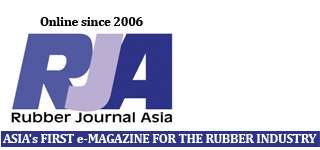Is it different this time? Once again Asian rubber producers are trying to force prices higher, this time by restricting supply and attempting to break the link between physical and futures prices.
Certainly, Asian rubber has moved higher since at least 10 major producing companies said earlier this month that they plan to raise prices and scrap a system of pegging them to the benchmark set by the SICOM exchange in Singapore.
The main SICOM contract has jumped 7 % since a six-year low of US$1.35 a kilogram hit in January, a level that was revisited on April 9, to close on Tuesday at US$1.445. This is still 5.8 % below the price at the start of the year and about a quarter of the record high reached in February 2011.
Other regional benchmarks have also gained, with the Tokyo Commodity Exchange contract reaching a 5-week closing high on Tuesday of 216.7 yen (US$1.82) per kg, while Shanghai futures ended at 14,370 yuan (US$2,318) per tonne, a 16 % gain since April 9.
These are impressive gains, but whether they can be sustained depends on the rubber producers being able to do something they haven’t done in the past, namely keep supply discipline for an extended period of time.
Sri Trang Agro-Industry and Halcyon Agri Corp, who account for nearly a fifth of global natural rubber output, have joined with at least eight other growers in a bid to boost prices.
They plan to raise rubber prices in the second half of the year, and some may stop supplying into the SICOM system in favour of directly negotiating with buyers, mainly tyre makers.
“Prices of SICOM no longer reflect the real cost of rubber production,” a spokesman for Thailand-based Sri Trang told Reuters in an email, adding that the company would also stop delivery to the bourse.
Sri Tang is the world’s largest producer with an annual capacity of 1.2 million tonnes, an amount about the same as the output of Malaysia, the third-biggest producing nation.
Halcyon will also stop supplying cargoes to SICOM, as will other producers.
While this may be bad news for liquidity on the Singapore Exchange-owned SICOM, it doesn’t necessarily follow that the producers will be able to get the higher prices they seek.
Major tyre makers have flexibility to source rubber from other suppliers and may simply decline to pay the higher prices the producers want.
It then becomes a game of chicken, with the winner likely to be the one who can last the longest.
Given the global oversupply of rubber and healthy inventory levels, it seems the tyre makers may be holding the better hand, at least for the moment.
INVENTORIES LOWER, DEMAND MIXED
Crude rubber stocks at Japanese ports stood at 11,182 tonnes as of April 10, down 3.8 % since a reading on March 31. The stocks have been declining since reaching above 22,000 tonnes in May last year, but remain at comfortable levels.
Inventories monitored by the Shanghai Futures Exchange have also been declining, standing at 134,309 tonnes as of April 24, down from 207,658 tonnes in early February.
However, they are still well above the low of 10,291 tonnes reached in May 2011.
Demand in top buyer China has also been weak so far this year, with first quarter imports of natural rubber dropping 23.6 % to 614,973 tonnes from the same period last year.
This is despite vehicle sales still rising, albeit at a slower pace, with total sales rising 3.9 % in the first quarter from a year earlier.
While China has been slowing its rubber imports, the news isn’t so bad from the rest of the world, with demand gains in the United States and the European Union.
However, the Association of Natural Rubber Producing Countries expects total natural rubber supply to rise 5 % in 2015, after posting the first drop in half a decade in 2014.
The association’s reasoning is that higher prices will tempt more production, which seems somewhat at odds with the rubber companies’ plans to cut output in order to boost prices in the first place.
Previous attempts by governments in the top producers Thailand, Indonesia and Malaysia have met only limited success, mainly because state buying of supplies merely encouraged continued over-production.
The rubber companies may enjoy more success, but their pockets will have to be deep enough to survive a period of lower sales volumes, and their shareholders will have to be brave enough to risk giving market share to competitors.

